Engraved enamel: Why some dials never fade
Up close with the painstaking process that gives vintage watches an enduring quality—and why it matters to collectors today.
Happy Labor Day weekend. I hope this newsletter can give you some company during a car ride, flight delay, or simply a slow weekend morning.
In today’s newsletter: The lost art of engraved enamel dials, the painstaking technique that gives vintage Patek its enduring quality. Explained with lots of close-ups and context, so click the subject line above to view online. But first:
The Roundup
The steel Patek Philippe 1518 is back. Phillips will be auctioning the same steel Patek Philippe 1518 it sold for $11m in 2016, this time with a reserve of $8m. Rumor is it comes from a mega Chinese collector, perhaps the same one that bought the Paul Newman Daytona for $17m in 2017, among other important watches. “I would venture to say it is the [1518] that has changed hands the most times,” Ben wrote about this watch in 2016. I’ll be in Geneva in November for the auctions, taking side action on the over-under. Meanwhile, Davide Parmigiani clarified that the steel 1518 that he’s offering via private treaty for “in excess of $20m” is still for sale after presenting two offers to the consignor (rumored to be Fratini).
How a billionaire brought turmoil and trouble to Sotheby’s (The New Yorker). A looong profile about what’s happened at the auction house since billionaire Patrick Drahi took over in 2019. It sounds like the “turmoil” has more to do with the struggling art market. Luxury goods, like watches, have actually doubled since the pandemic:
“A current Sotheby’s executive observed to me that the watch industry alone is now comfortably larger than the global art market. It is possible that Drahi’s legacy at Sotheby’s will be to accelerate a change—in taste and consumption and the expression of desire—that was happening anyway.”
An interesting stat, perhaps worth further dissection about how tastes have changed, and what that’s meant for watches.
Sneak Peek: Berneron Annual Calendar (Unpolished). I won’t be at Geneva Watch Days, but I anticipate one of the buzziest releases will be Berneron’s annual calendar, which I was able to preview in April. It features a time-and-date layout logically read up-down and left-right, starting with the large jump hour at 12 o’clock. As I wrote then: It’s different from the Mirage, but confirms Berneron's true ambition: building an enduring brand. Here’s that newsletter if you missed it.
Rules for Collecting. Earlier this week, I asked on Instagram: What are your rules for collecting? No kidding, I got hundreds of responses. I’m still going through them all. If you’ve got any rules, leave a comment or reply to this email. I’m hoping to run Unpolished’s X Rules for Collecting soon.
The beauty of an engraved enamel dial
A closer look at the technique used to craft some of the most striking vintage dials.
Collectors talk about originality and restoration all the time. Core to this is understanding how dials were made. Through much of the 20th century, a few brands used a time-intensive engraved enamel technique, where the markings are engraved and filled with hard enamel. Dialmaker Stern Freres primarily used the method for clients including Patek Philippe, Vacheron Constantin, and Audemars Piguet.1
These dials were designed to be cleaned and restored to last for generations, unlike the ink of pad printing, which fades with time. This engraved enamel process involves more steps and craftsmanship than printing, which is why it was only used by high-end brands. It’s what makes collecting Patek Philippe different from many other brands.
Whether you’re a collector or appreciator of these types of vintage watches—most notably vintage Patek watches through the ‘60s—it’s important to understand this method and see examples up close.2 Here’s how it works:
The dial maker starts with a polished silver or dial blank (silver for simple Pateks, gold for complicated ones).
Dial markings are hand-engraved or stamped into the surface.
The engravings are filled with enamel and fired at high heat.
After each firing, the dial is polished to remove any impurities that arose to the surface during firing (this happens with silver).
This leaves the enamel either flush with the metal or slightly raised.
Any additional finish–brushing, blasting, etc.–is applied.
The final varnish or zapon is applied, which acts as a seal.
These engraved enamel dials have a special quality:
First, there’s the craftsmanship. It’s a time-consuming, craft technique that’s largely died over the past few decades because of its cost and the proliferation of CNC machines and automation.
Second, there’s the durability. The enamel is applied and heated to high temperatures, making it extremely durable. It simply doesn’t age like other materials.
Restoration Basics
In a future newsletter, we’ll take a closer look at dial restoration, but a few basics.
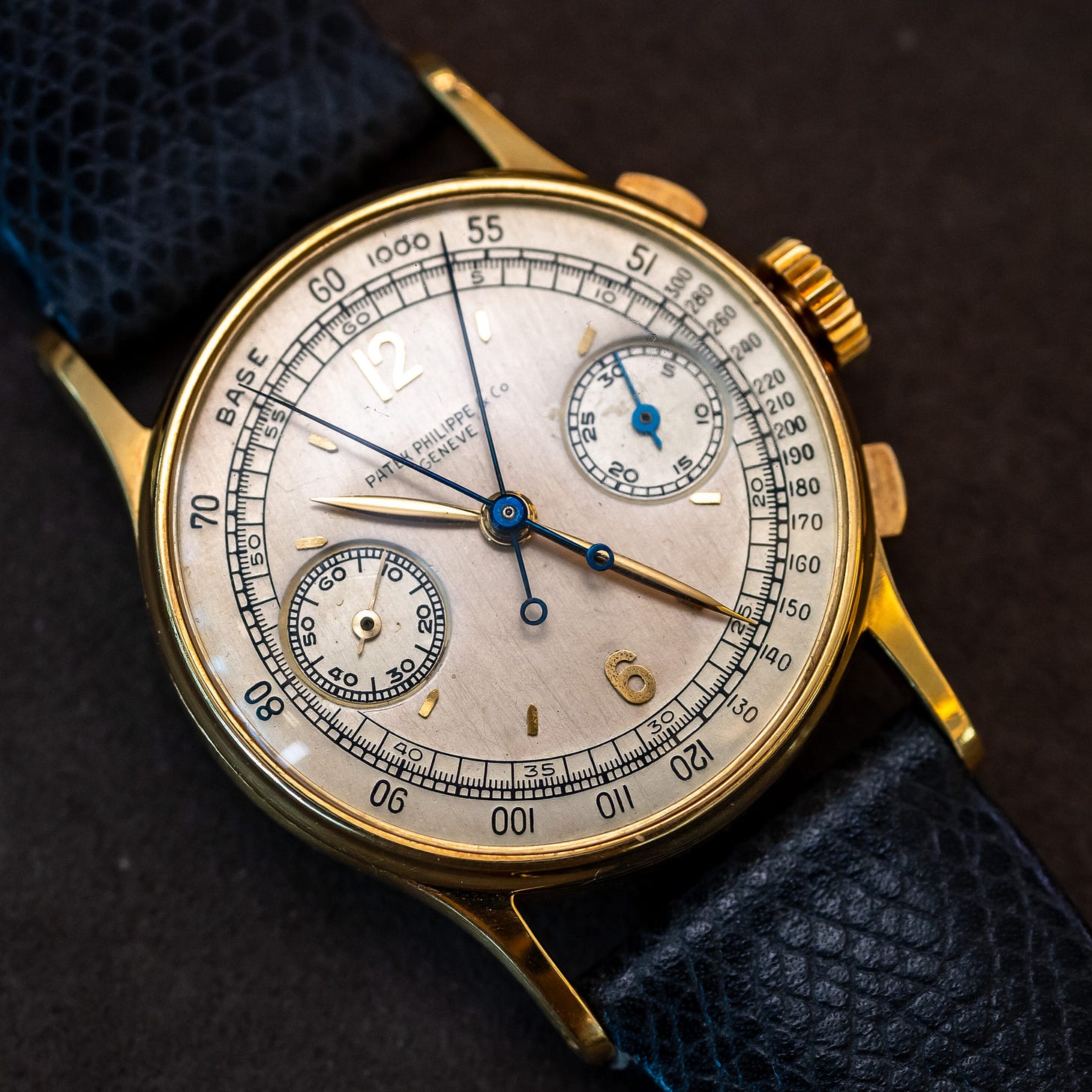
Originality and restoration are two of the biggest factors in vintage values—and collectors love to argue about what’s “acceptable.” Engraved enamel dials can handle cleaning, but it often leaves subtle enamel loss. Here are a few tells to look for:
Blown A: The top bar of the “A” in PATEK PHILIPPE is lost
Missing accent: A lost accent over the è in GENÈVE
Dropped comma: In long signatures, “Patek, Philippe & Co.” loses its comma
However, during restoration, these may also be reapplied with soft enamel, so you have to look closely. Does it look clean and crisp, or a little sloppier? Later-applied soft enamel can look more like it was applied with a paintbrush. On more complicated watches, you can also look at outer scales and tracks, which will typically lose some enamel in a cleaning or restoration.
Here’s a perpetual calendar 2499 that’s regarded as having a well-preserved, original, unrestored dial. It sold at Christie’s in 2018 for $3.2 million:
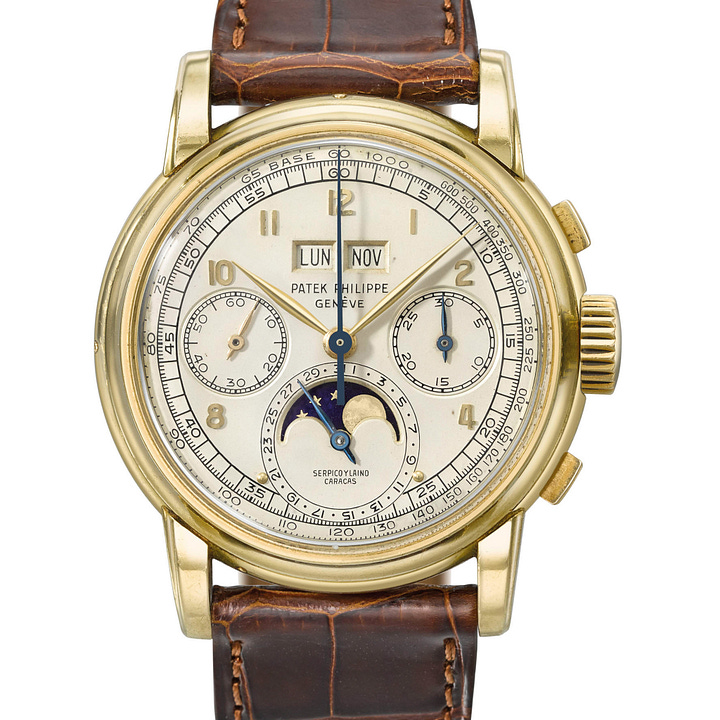
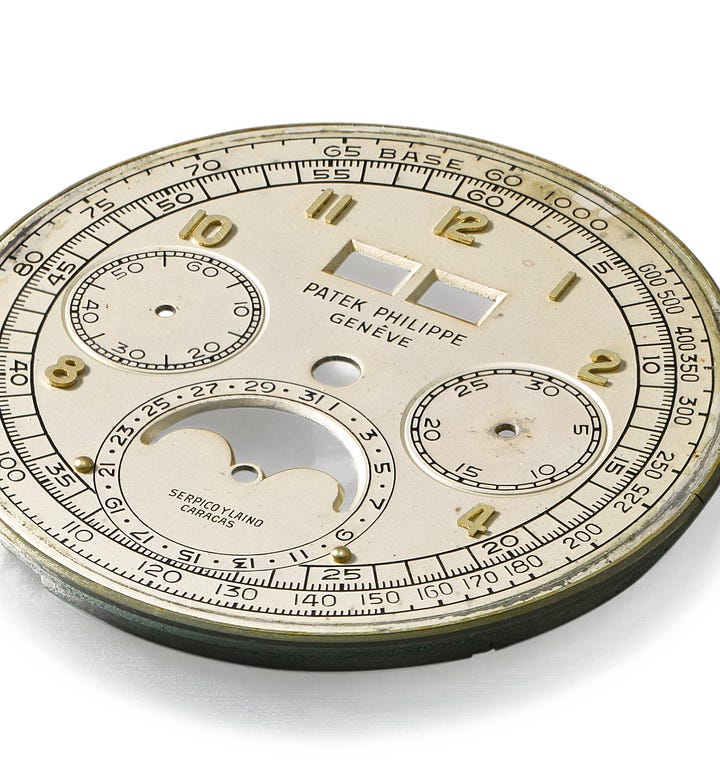
Here’s a ref. 2508R in good condition:
Raised signatures: Note the Patek Philippe signature may look slightly raised, but it’s not significantly raised over the dial metal. If the signature looks too raised, it can be a sign of cleaning. The cleaning process takes away metal, but the hard enamel holds the metal in place immediately surrounding it, which can give the entire signature a raised, “mound” effect. It’s been a common misconception among collectors that the higher the signature, the better.
Soft-enamel touch-ups: Here’s a Patek chronograph ref. 130 with scales made using the engraved enamel technique. Zoom in on the tracks, and you can see that soft enamel has been applied in places over the original enamel during a restoration:
Again, restoration isn’t inherently bad—most dials have seen it. Some restorations are sympathetic and less invasive; others, less so, and where you draw the line is often a matter of taste. One collector sees blemishes; another sees raw originality. Most of us live somewhere in between. I’ll cover restoration in more depth soon, but for now, here are a few macros from watches in “collectible” condition:
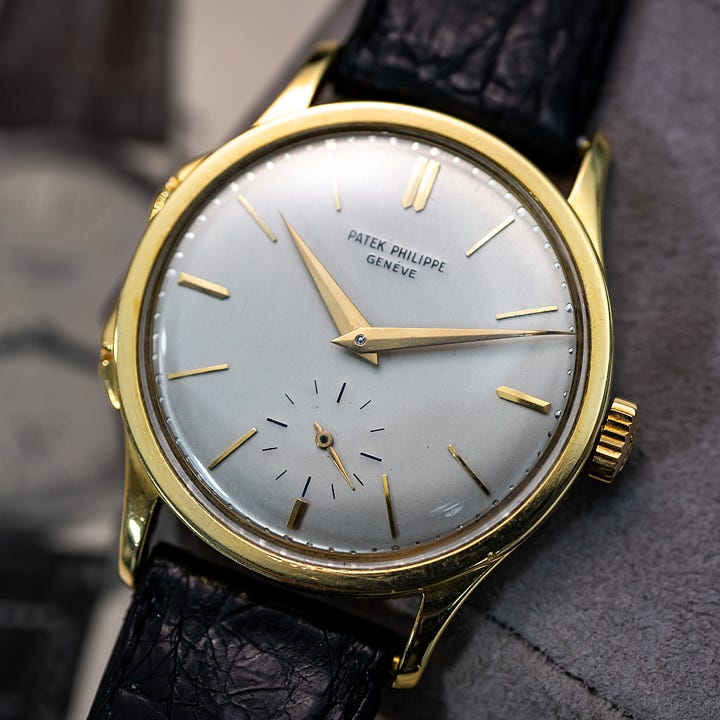
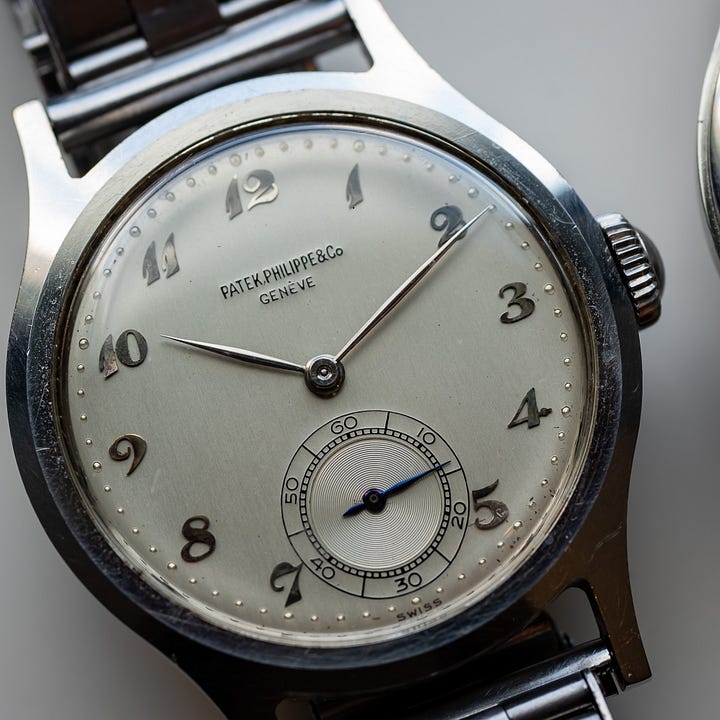


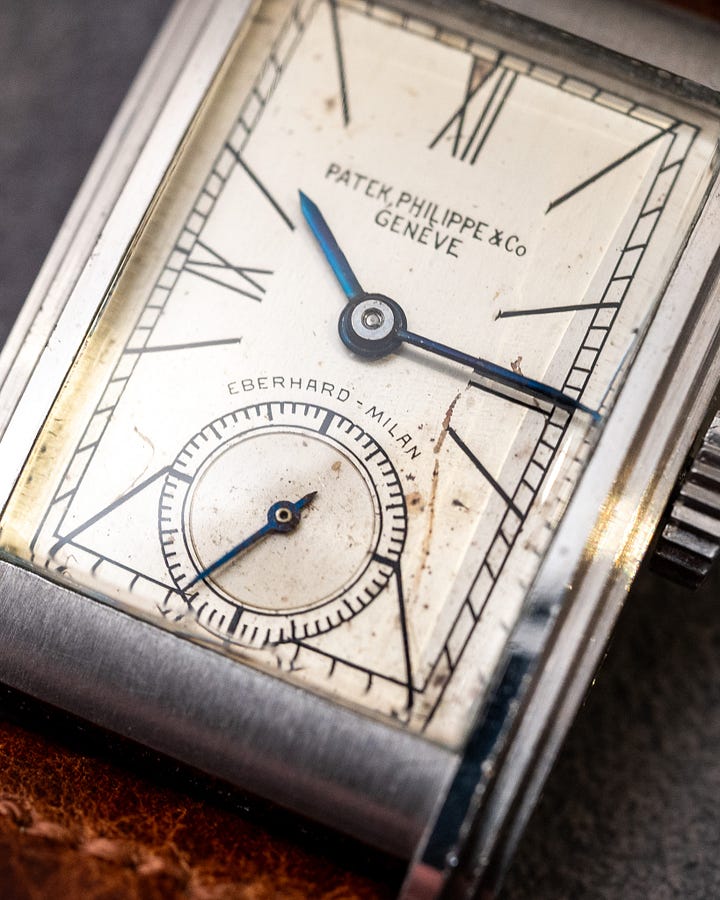
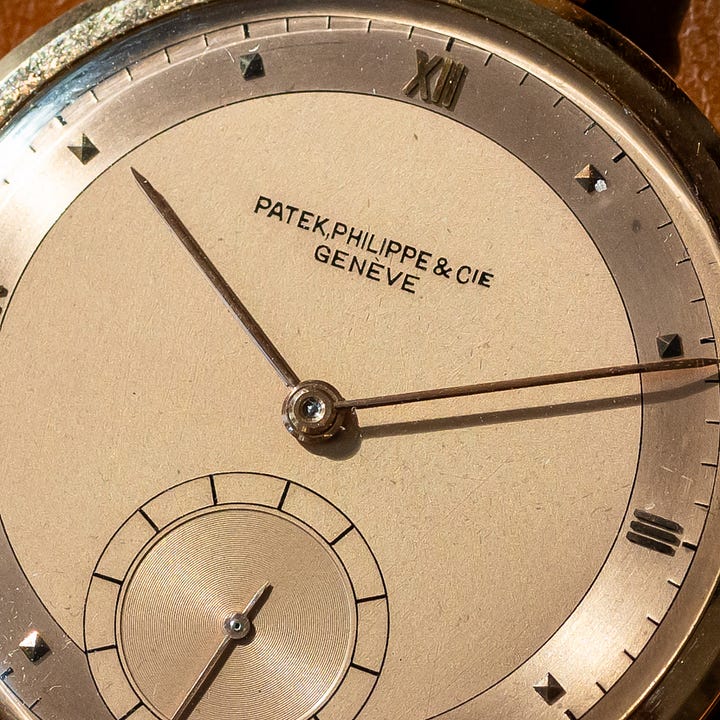
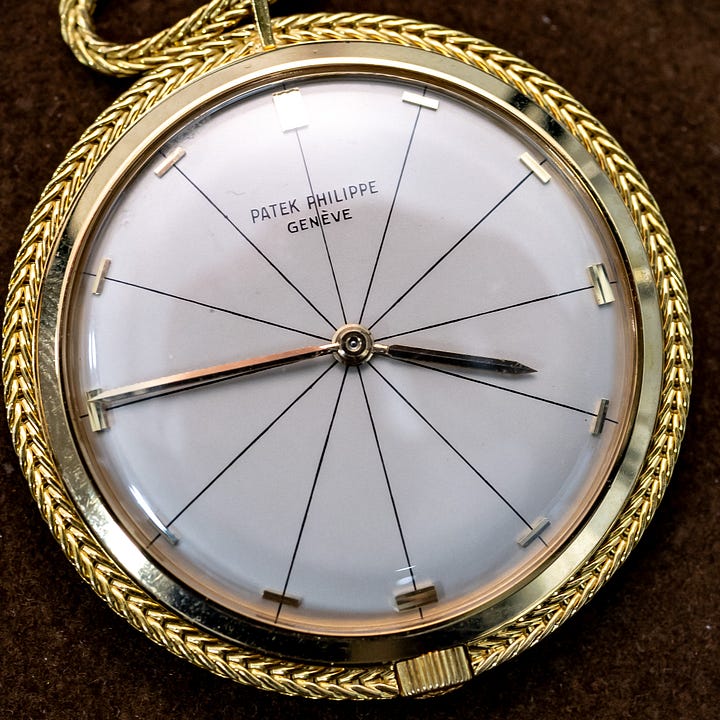
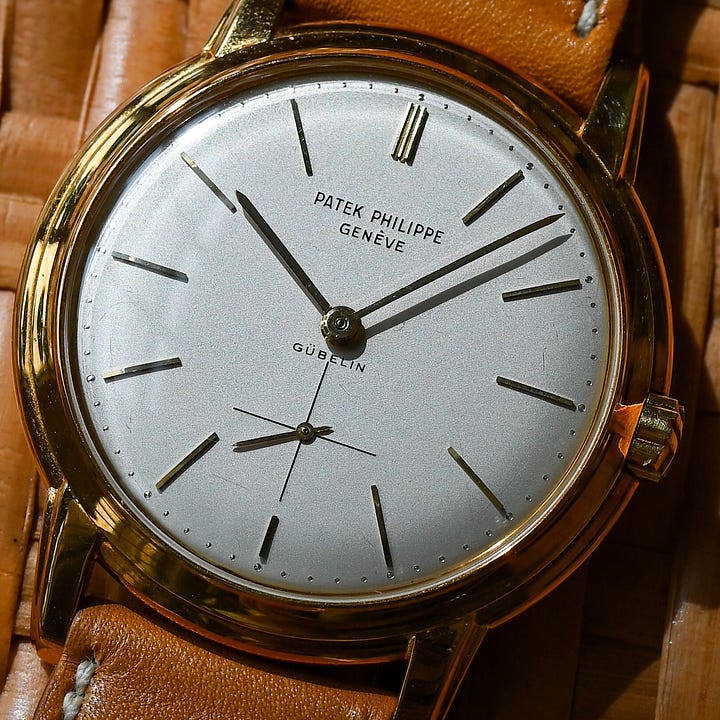
Above: A gold 565 Calatrava with original hard enamel signature.
Engraved enamel today
This engraved enamel technique has mostly died out over the past few decades. But some small batch makers have started bringing it back. Naoya Hida touts the hand-engraved, enamel numerals on its dials.
Chinese watchmaker Qin Gan has a modernized process that’s similar to the old-school Stern Freres technique, which he’s illustrated before:

Understanding the craft behind these dials helps us see them not just as pretty faces, but as work meant to last. For collectors, that means grappling with the line between preservation and restoration, and how much of the original maker’s hand we want to keep intact. Those are questions with no single answer, and they’re dealt with differently in different collectible categories. But it’s also what makes vintage so endlessly interesting.
This was a bit of a nerdy explainer, so let me know if you enjoyed it. Get in touch:
tony@unpolishedwatches.com
Or (my favorite), tap the heart, leave a comment, or send a message in the Substack app.
I recently learned that Hamilton employed the technique in certain models too—American watchmaking!



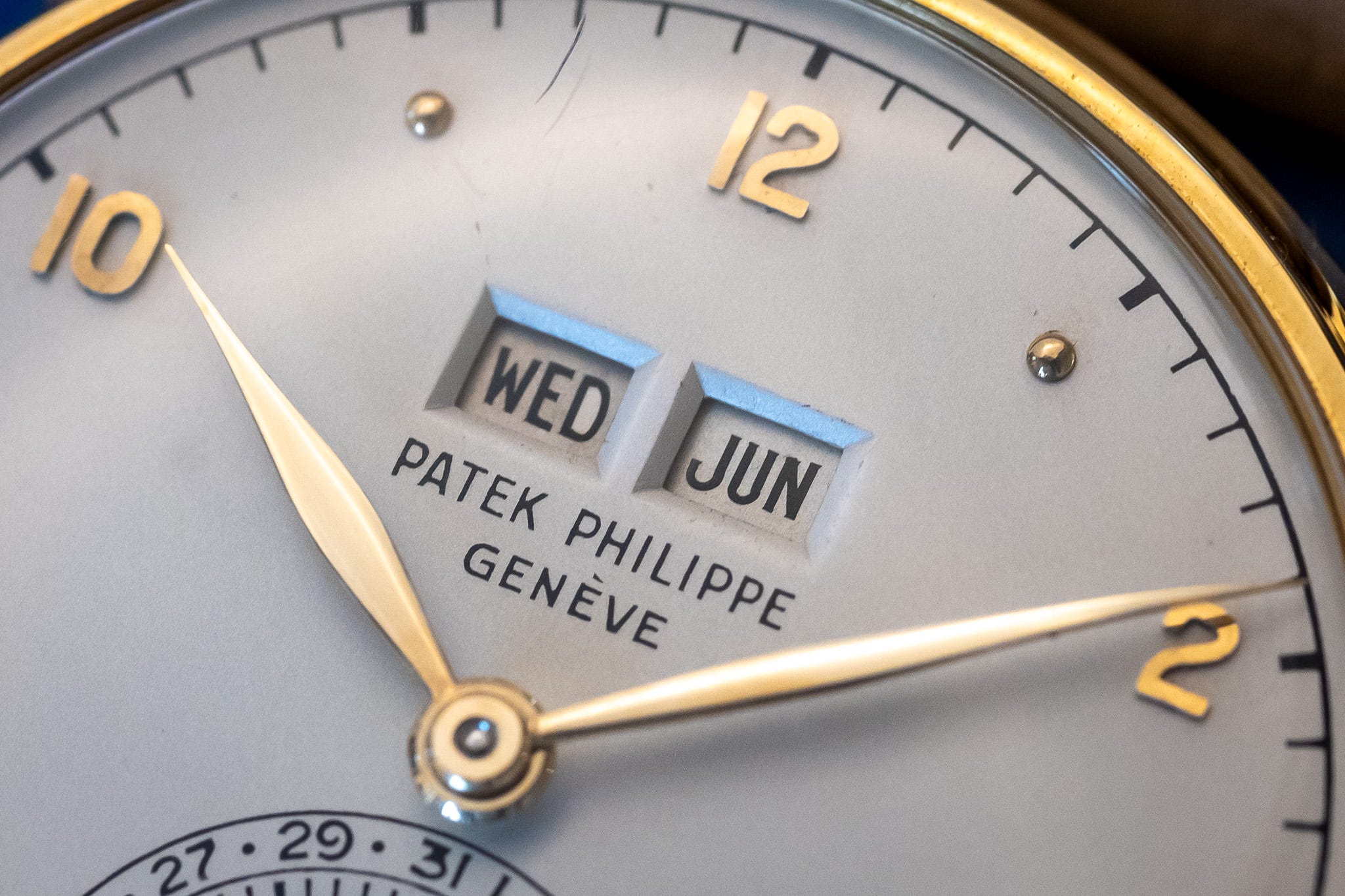
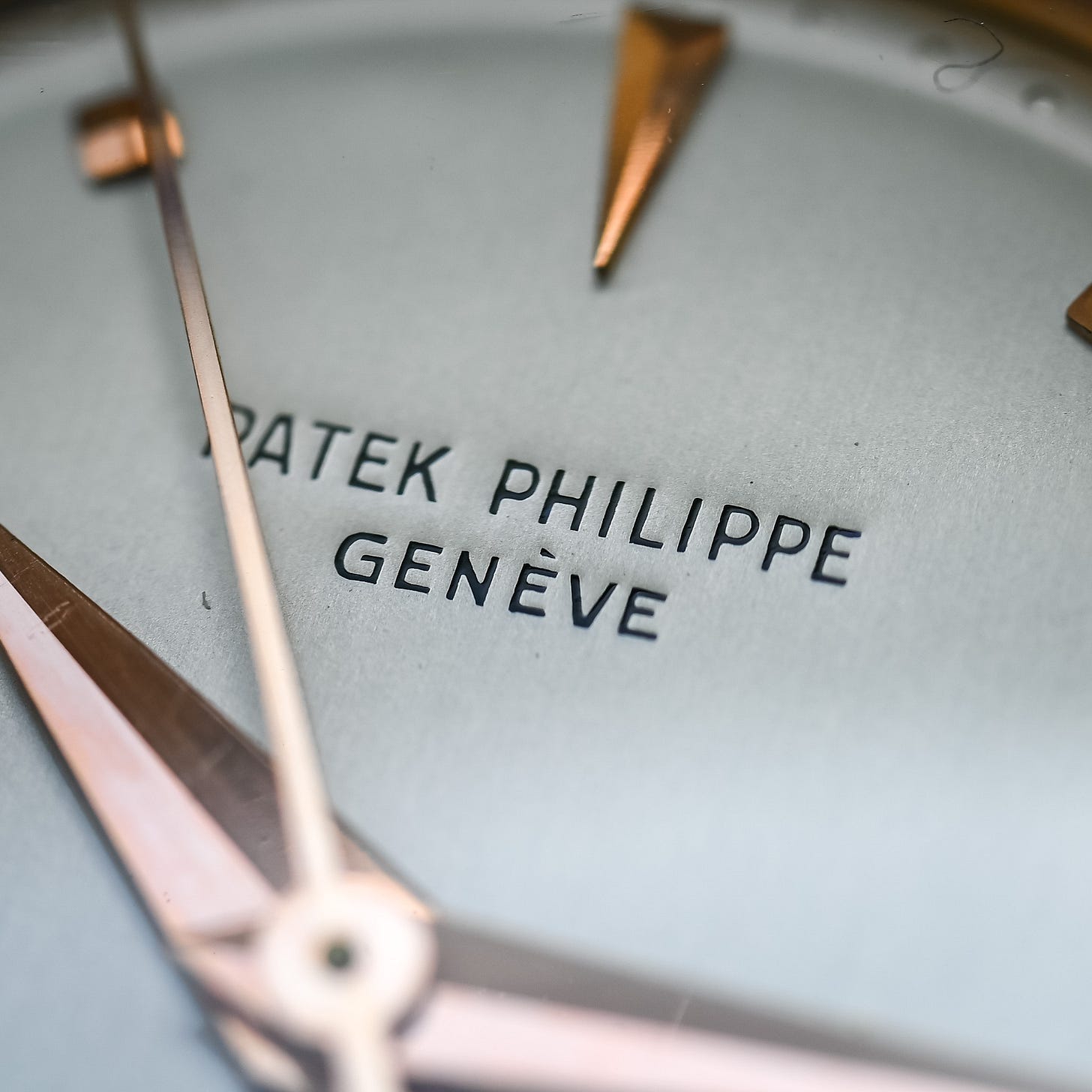


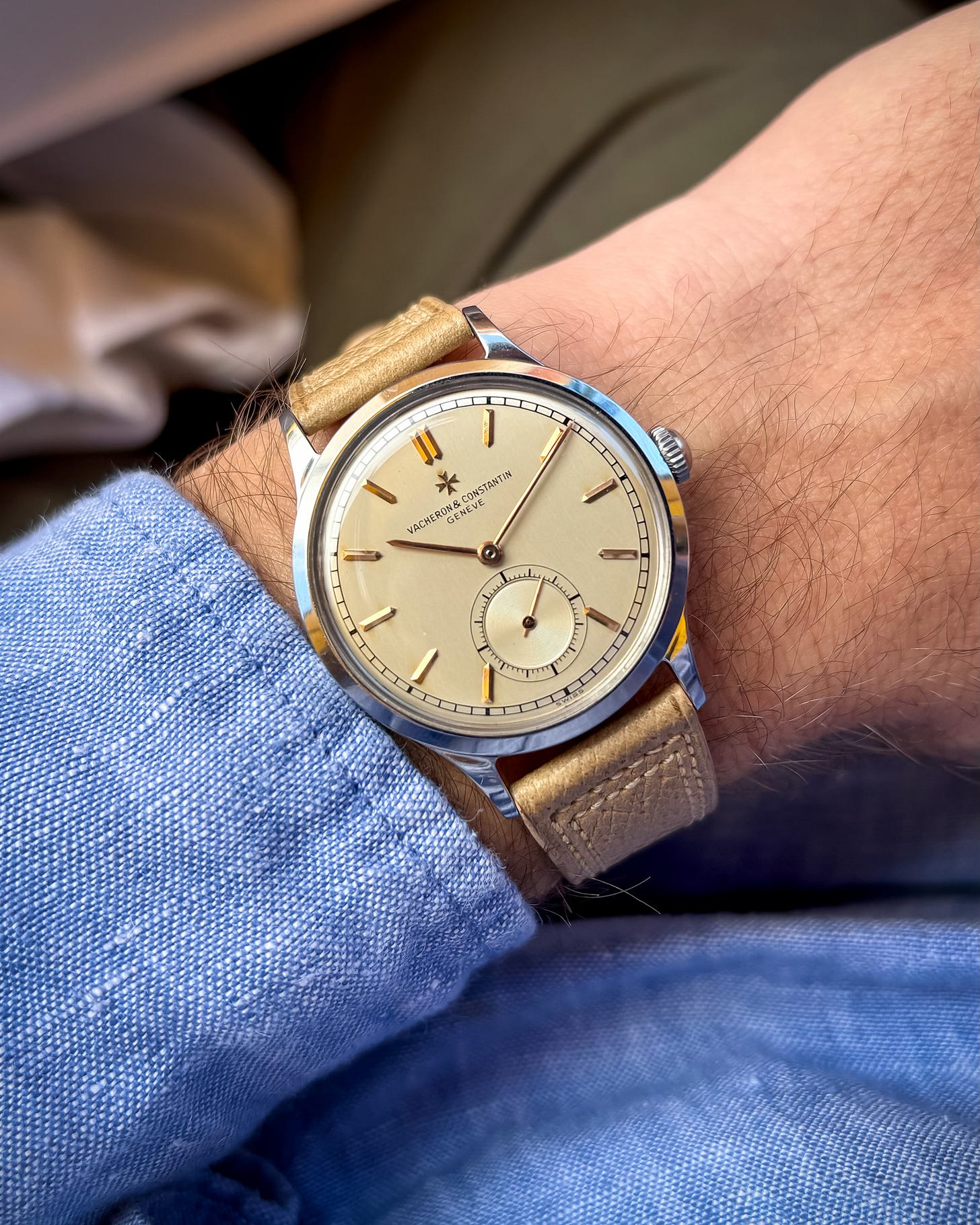
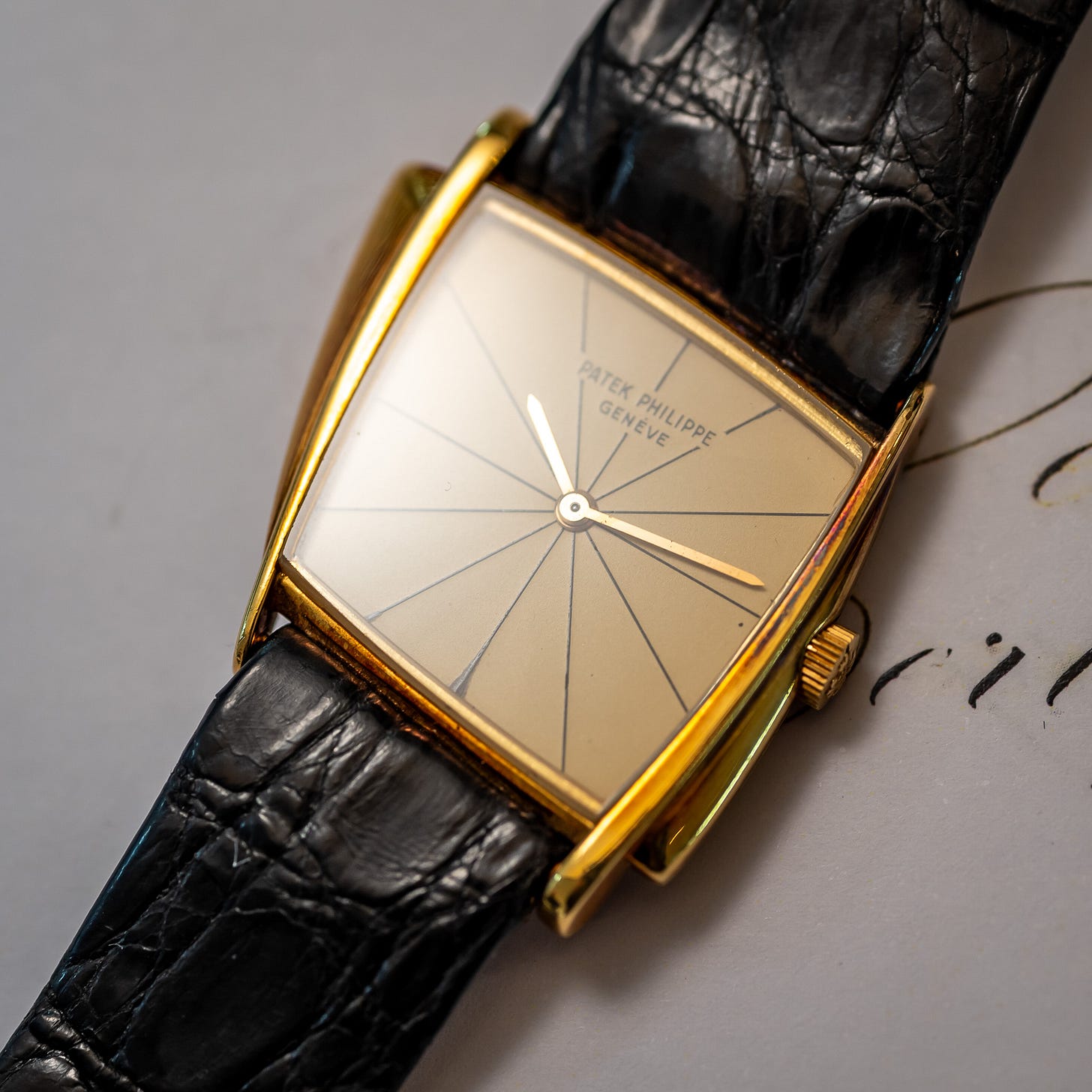

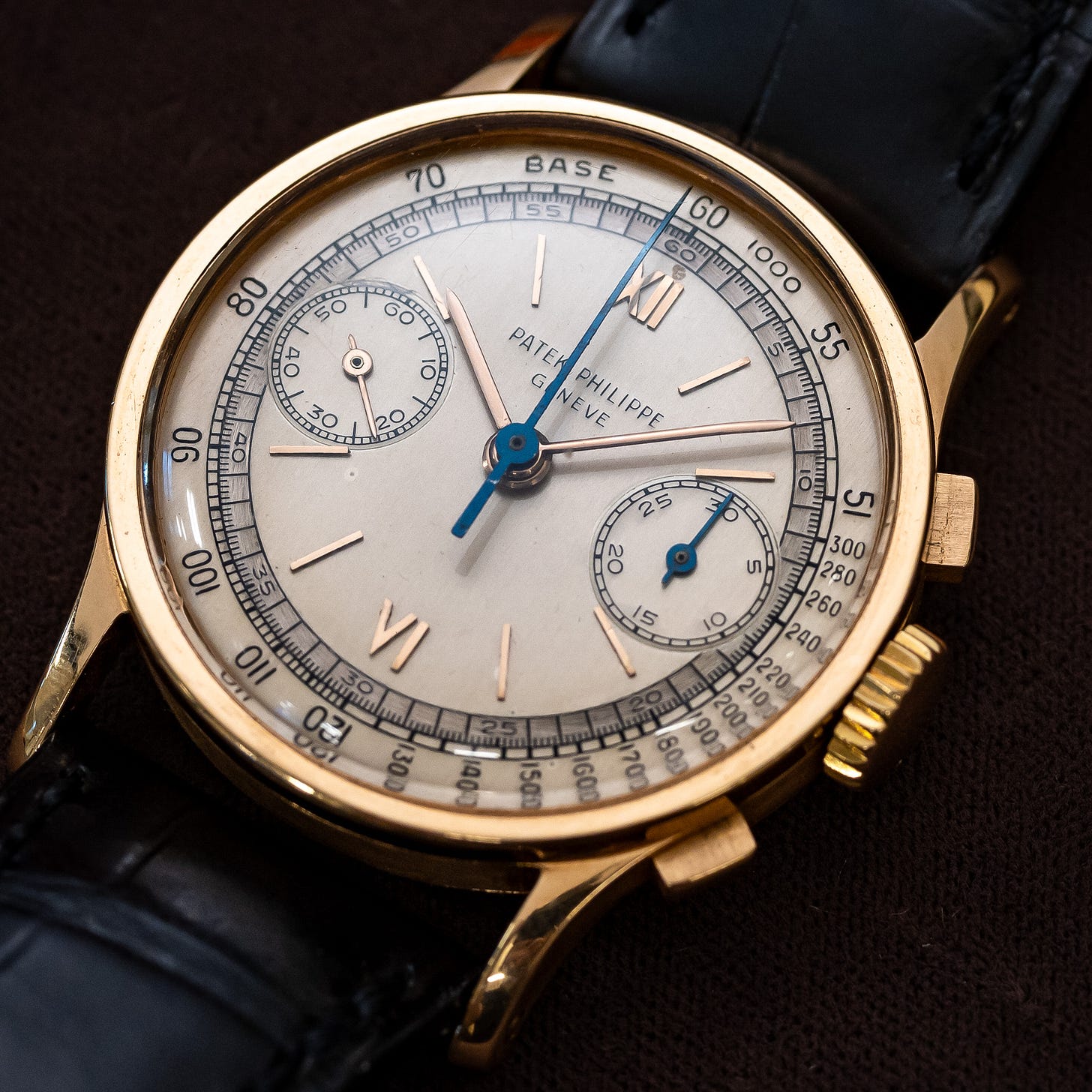
My collecting rules. 1. Never pay more than the list price so that I can wear any watch without treating it like an investment. 2. Focus on independents, ideally something iconic or central to their story. 3. Collect widely across brands rather than deeply within a brand. (Others do the opposite and I learn a lot following their scholarship.) 4. Buy “snack” watches while saving up for larger grail pieces. This allows me to buy only what I can afford with cash on hand. 5. Ordering a watch that you have to wait months for minimizes the urge to buy more grail pieces. This saves me money in the long run while I enjoy the anticipation. 6. Pay attention to my dreams. If a watch keeps coming to me from my subconscious, that probably means I want it. 7. Everyone has a story about how they collect, so listen to them with curiosity (and without judgement).
ON ENAMEL
What we now call 'vitreous enamel' or 'jewelry enamel' or 'torch fired enamel' is what used to be called 'enamel', literally back to the Mycenaeans. It's fused glass with impurities, full stop. Those impurities tend to be toxic, particularly if they are translucent - Japanese enamel is favored by jewelry enamelists because it has all the delicious cadmium, lead, manganese, etc that fuse into the lovely colors favored by Art Nouveau.
What we now call 'soft enamel' is also called 'paint.' Nobody protected enamel as a trade or process so everyone has been free to call any process or coating 'enamel' for 100+ years.
What we now call 'hard enamel' can also be called 'nail gelcoat.' It's epoxy, UV-cured or otherwise, that is substantially more durable than 'soft enamel' and nowadays, more durable than 'vitreous enamel.' It can also be called 'ceramic' or 'nano-ceramic' depending on what's in the resin and how these processes are sold. Invacon Hyceram is polymer goo cured in an autoclave that ends up as a lot of chapter rings and luminous indicators in the watchmaking industry. It can be ground, polished, and even machined. It imitates colors and lusters very similar to expensive fingernail polish.
ON ENAMEL DIALS
'Vitreous enamel' was used extensively for pocket watches. It is, simply put, melted sand and as such, adds thickness and bulk to the dial - because the expansion coefficient of glass is different than silver/brass etc it is necessary to add a coat on the back for every three or four coats on the front or else the dial cups and cracks. This is an expensive process for expensive product, and something people forget is that the Swiss didn't make expensive product until the American watch industry subsumed itself in military chronometers, instruments and timers. Breguet fled The Terror for Switzerland...just long enough to high-tail it to England. FA Jones left Boston for Schaffhausen because Swiss production was cheap and primitive. Rolex became Swiss for tax purposes. The Swiss watch industry of the '20s was akin to the Japanese watch industry of the '60s.
Pocket watches were obsolete by the time the Swiss watch industry was in ascendancy and thin, light watches were vogue. The bulk of full-enamel dials did not fit into the physical or financial packaging of the Swiss, who were busy selling 'luxury imports' to markets unclogging the better part of a decade of deprivation. Thus 'engraved enamel' dials - a light dusting of white base and then a pad-printed contrasting text and indicator layer, oven fired and unground. Pocket watch dials are mirror-flat because the pad-printed text was then surrounded by contrasting enamel, fired and ground while mid-century enamel watch dials are not because of the thickness and expense.
ON RESTORATION
Restoration of 'engraved enamel' is not something I'd want to attempt as you need to heat the dial past cherry red and into a dull burnt orange. Refurbishment of 'vitreous enamel' generally involves careful cleaning to minimize the appearance of cracks as the indicators are fully protected.
'Vitreous enamel' being glass, it stands up to more cleaning than paint. Imperfections can be ground away, but it is a grinding process and much like case polishing in that edges are softened. If those edges are what makes the word 'PATEK PHILIPPE' you may well end up with 'IHTLK IHLIHHL.'
ON CHEMISTRY AND CRAFT
Incidentally, silver is used for blanks because chemistry gets gnarly at 1400C and silver interacts with a lot less than any other material you can apply vitreous enamel to. Gold is used for the same reason gold is always used - it impresses the customer. Most craft enamel these days is opaque because it can be applied to copper. Copper is highly reactive and as a result, clear enamel changes color in chaotic and unpredictable ways.
The 'engraving' is also usually 'etching.' Photoresist applied to the metal prior to submerging in a chemical bath for minutes or hours will create intricate patterns without any particular craft. This is how circuitboards have been made for generations, incidentally, and can be done with no specialized equipment beyond a Xerox machine.
Every wild swoopy pottery color you've ever seen at the craft fair is due to the chaotic interaction of chemicals in silica at high temperature. American enamelists tend to favor the chaos because they buy Thompson which is EPA approved. Japanese enamelists tend to favor the purity because a handful of families still produce traditional enamel (https://www.youtube.com/watch?v=a-ZA-ShWR1Q). Emaux Soyer in France splits the difference.
Almost every 'fine enamel' dial on a luxury watch was painted by one lady, Anita Porchet. These watches tend to be bulkier because depth of color requires depth of enamel. An enamel dial watch needs a longer cannon pinion and center wheel staff than a painted dial.